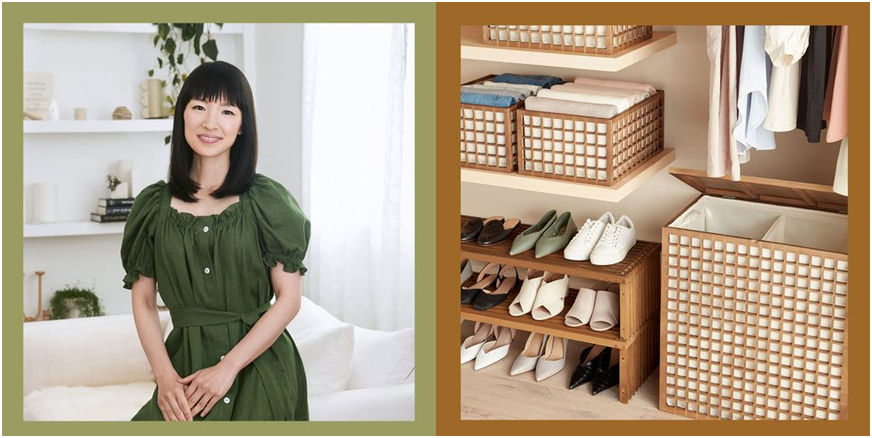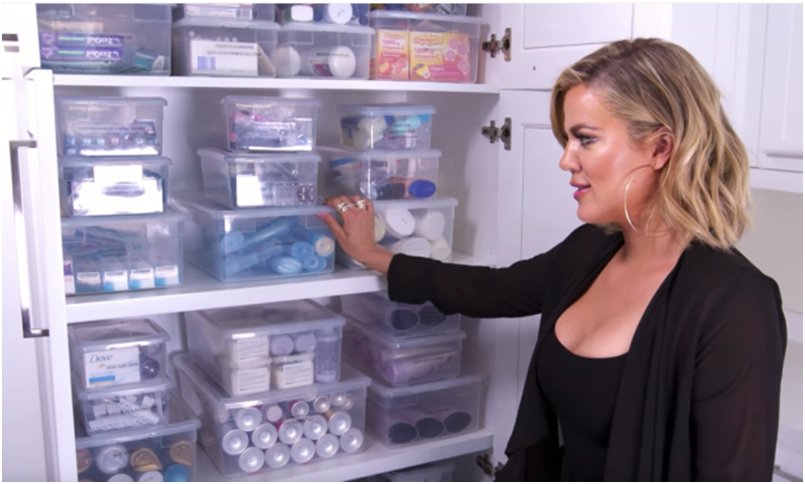
Charles R. Goulding and Preeti Sulibhavi clean up their act with 3D printed organization.
It’s always on the list of things we need to get done, but somehow it never does. Getting organized is something all of us need to do for many reasons, cleanliness being just one of them. De-cluttering one’s personal space helps to bring peace of mind.
In comes Marie Kondo of sparking joy fame. The decluttering expert, Netflix star, writer and consultant is launching a new collection called The Container Store x KonMari. Available online and in stores as of January 15, 2021, the collection features more than 100 sustainably sourced products.
These products geared to help organize include hangers, drawer organizers, trays, containers and canisters. Produced from bamboo, ceramic, recycled fiberboard and wood certified by the Forest Stewardship Council, these products can be used for various purposes including the kitchen, closet, desktop and kids’ rooms. The products are intended and designed to encourage a tidy and joyful environment.
Currently, the homegoods business is booming. The Container Store, known for its versatile and sustainable organizing essentials, had sales of about $915,953,000 for their Fiscal Year Ended March 2020. The new collaboration with Marie Kondo can only add to this growing trend. Sales of IKEA products in addition to the increased traffic home improvement stores, such as Home Depot and Lowes, have seen recently illustrate how 3D printing has helped support this rising trend as well.
Doctors Lindsay Gilman and Sydney Gladman from the Women in the Law Sharing Success Committee co-wrote an article entitled, “3D Printing and Marie Kondo: How Does it Work and How Can it be Used to Spark Joy?” Dr. Gilman explained how Marie Kondo’s Netflix show and her organizing methods inspired her to use 3D printing to make storage boxes that perfectly fit her drawers. She went on to say that she then branched out to use 3D printing for kitchen gadgets, including a decorative toothbrush holder and a bagel slicer.

Companies engaged in 3D printing for the development of organizational products and similar activities may be eligible for the Research and Development Tax Credit.
The Research & Development Tax Credit
Whether it’s used for creating and testing prototypes or for final production, 3D printing is a great indicator that R&D Credit eligible activities are taking place. Companies implementing this technology at any point should consider taking advantage of R&D Tax Credits.
Enacted in 1981, the now permanent Federal Research and Development (R&D) Tax Credit allows a credit that typically ranges from 4%-7% of eligible spending for new and improved products and processes. Qualified research must meet the following four criteria:
- Must be technological in nature
- Must be a component of the taxpayer’s business
- Must represent R&D in the experimental sense and generally includes all such costs related to the development or improvement of a product or process
- Must eliminate uncertainty through a process of experimentation that considers one or more alternatives
Eligible costs include US employee wages, cost of supplies consumed in the R&D process, cost of pre-production testing, US contract research expenses, and certain costs associated with developing a patent.
On December 18, 2015, President Obama signed the PATH Act, making the R&D Tax Credit permanent. Since 2016, the R&D credit has been used to offset Alternative Minimum Tax (AMT) for companies with revenue below $50MM and, startup businesses can obtain up to $250,000 per year in payroll tax cash rebates.
Good Tidings For Those Who Tidy Up
As the saying rightly points out, less is in fact more. De-cluttering one’s physical space helps an individual let go of things they no longer need while clearing the mind at the same time. The 3D printing industry can help organize this industry to create more durable yet versatile products for consumers looking to less as more.
